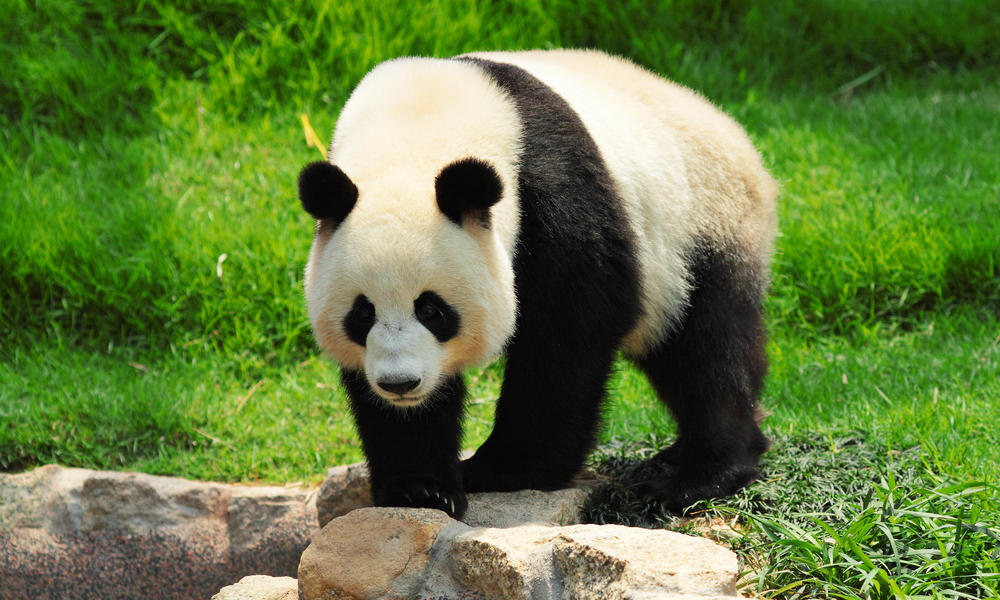Giant Panda
Giant Panda

The giant panda (Ailuropoda melanoleuca, literally "black and white cat-foot"; Chinese: 大熊猫; pinyin: dà xióng māo, literally "big bear cat"),also known as panda bear or simply panda, is a bear native to south central China. It is easily recognized by the large, distinctive black patches around its eyes, over the ears, and across its round body. The name "giant panda" is sometimes used to distinguish it from the unrelated red panda. Though it belongs to the order Carnivora, the giant panda's diet is over 99% bamboo.iant pandas in the wild will occasionally eat other grasses, wild tubers, or even meat in the form of birds, rodents, or carrion. In captivity, they may receive honey, eggs, fish, yams, shrub leaves, oranges, or bananas along with specially prepared food.
T A X O N O M Y
For many decades, the precise taxonomic classification of the giant panda was under debate because it shares characteristics with both bears and raccoons. However, molecular studies indicate the giant panda is a true bear, part of the family Ursidae. These studies show it differentiated early (about 19 million years ago) from the main ursine stock; since it is the most basal member of the group, it is equidistant from all other extant ursids.The giant panda has been referred to as a living fossil.
LIFE CYCLE
Birth facts:
- A newborn panda cub weighs just 90-130 g.
- A cub is just 1/900th the size of its mother - one of the smallest newborn mammals relative to its mother's size.
- Pandas are dependent on their mothers for the first few months of their lives and are fully weaned at 8 to 9 months.
- Most pandas leave their mothers when she becomes pregnant again, usually at about 18 months.
- A panda's average life span in the wild is 14-20 years.
- But they can live up to 30 years in captivity.
Adult facts:
- Giant pandas are generally solitary.
- Each adult has a well-defined home range.
- Although they are not territorial, females do not tolerate other females and sub-adults within the core areas of their range.
- Encounters are rare outside the brief mating season, but pandas communicate with each other fairly often, mostly through vocalization and scent marking.
- While roaming their territories, they mark their routes by spraying urine, clawing tree trunks, and rubbing against objects.

UNIQUENESS OF A PANDA
- The eyespots of a giant panda cub are initially in the shape of a circle. As the cub grows, the circles become shaped like a teardrop.
- Pandas have been a symbol of peace in China. For example, hundreds of years ago, warring tribes in China would raise a flag with a picture of a panda on it to stop a battle or call a truce.
- Pandas are pigeon-toed; in other words, they walk with their front paws turned inward.
- Pandas do not run fast—a slow trot is as fast as they can go. The fastest bear is the black bear, which can run 35 miles per hour. That’s about as a fast as a horse or deer.
- The ancestor of the giant panda is the Ailurarctos (“cat bear”), which is an extinct genus of the Chinese panda that lived 8 million years ago. The skull of another ancestor, Ailuropoda microta, shows that it was half the size of a modern-day giant panda. Research shows that for the past 3 million years, giant pandas have evolved as a separate linage from other bears.
- A panda fur is worth between $60,000 and $100,000 on the illegal trade market.
Komentar
Posting Komentar